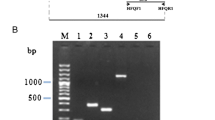Abstract.
Bacillus subtilis cells entering stationary phase due to nutrient deprivation have a number of options. Complex interconnected regulatory circuits govern differential gene expression patterns that channel the cell along the path it has sensed is most advantageous for survival in the environment. The actual choice depends upon the activity of an elaborate signal transduction network (the phosphorelay) that ultimately affects the activity of two key transcription factors, Spo0A and AbrB. Should the cell commit to sporulation, a temporally and spatially controlled cascade of RNA polymerase sigma factors leads to the development and release of an endospore from within the terminally differentiated, apoptotic mother cell.
Similar content being viewed by others
Author information
Authors and Affiliations
Additional information
Rights and permissions
About this article
Cite this article
Phillips, Z., Strauch, M. Bacillus subtilis sporulation and stationary phase gene expression. CMLS, Cell. Mol. Life Sci. 59, 392–402 (2002). https://doi.org/10.1007/s00018-002-8431-9
Issue Date:
DOI: https://doi.org/10.1007/s00018-002-8431-9




